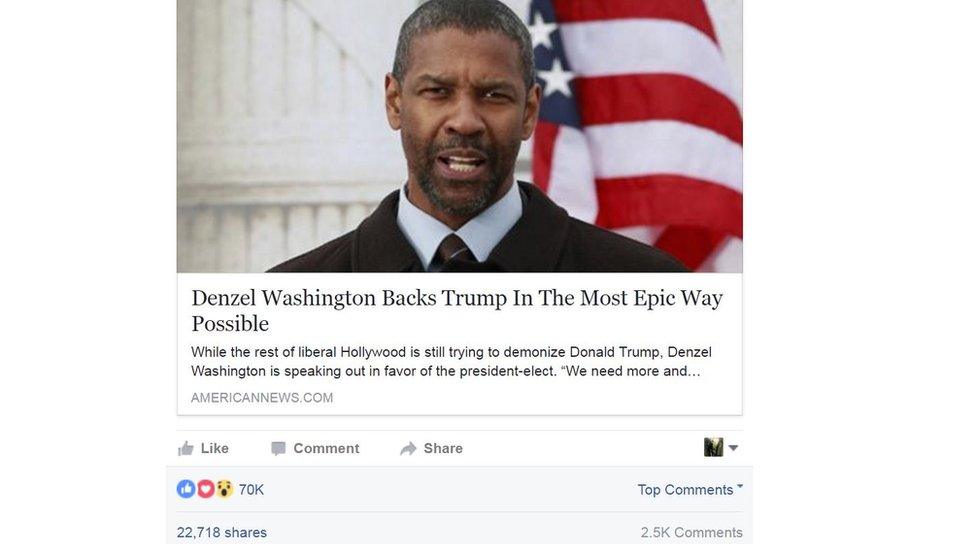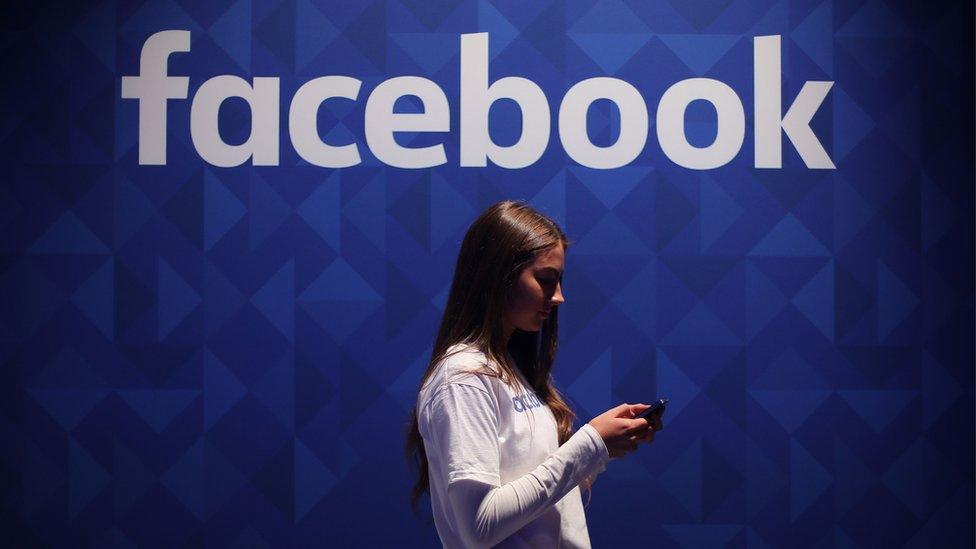Russia, Facebook, the US election and when 126 million isn't 126 million
- Published

It sounds like a lot of people.
That's nearly half of the 270 million Americans who are old enough to be allowed a Facebook profile.
The figure comes from the social network itself, which along with Google and Twitter, is preparing for a Senate hearing where it will explain Russia's impact on the popular sites.
But how many people have actually seen those posts?
Reach or views?
That very big number, 126 million, is the "reach" of some 80,000 posts published between June 2015 and August 2017.
Facebook defines a post's "reach" , externalas those people who may have come across the content (text story/video/image/ad) in their News Feed.
A post counts as reaching someone when it's shown in their News Feed.
So this figure takes no account of the number of people who may or may not have stopped to actually read the post.
Figures are for the first 365 days after a post was created and include people viewing the post on desktop and mobile.
The reach may be organic or paid. Organic reach is the total number of unique people who were shown your post through unpaid distribution.
Paid reach is the total number of unique people who were shown your post as a result of ads.

126 million users were "reached" by the posts - but how many actually saw them?
Crucially, therefore, when Facebook says that about 80,000 posts "reached" 126 million people in the US over two years, we don't know how many of those people actually stopped to read the content.
As a result, we don't know how many of these thousands of posts had any impact at all on swaying US voters ahead of the 2016 election.
Clearly, a mass targeting of posts can have a subliminal impact on people but it's hard to evaluate with any certainty based on the data we've seen so far.
Facebook goes on to explain that the number of Americans who saw those posts directly is 29 million - a much smaller number.
It is unclear what Facebook means by "seen directly".
Is 29 million a big number?
The first thing to say is that we don't know what relationship those 29 million users had to these Russian-sponsored posts.
Does it mean the content was shared with them by a friend or relative? Does it mean they engaged with it, that is, reacted to it, commented on it, shared it?
Secondly - we don't actually know whether each of those 29 million users represents an individual American.
Some might be fake profiles. Some individuals set up multiple profiles (one for work, one for play).
And of course, some may belong to children under the voting age - another way in which they would fail to influence an election.

Some Facebook users were fooled by this fake story which wrongly claimed Denzel Washington backed Donald Trump for president
Third - it's worth putting this in context.
Facebook says those 80,000 posts were "seen directly" by 29 million people over a two-year period.
In January 2017, there were estimated to be more than 214 million active monthly Facebook users in the US alone. An active monthly user is someone who has logged in over the last 30 days.
Given how much stuff those 214 million active Facebook users post and see, those 80,000 posts are likely to be a drop in the ocean.



- Published31 October 2017

- Published29 September 2017

- Published7 September 2017